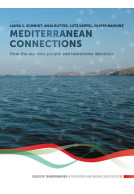Google Books previews are unavailable because you have chosen to turn off third party cookies for enhanced content. Visit our cookies page to review your cookie settings.
Detecting and explaining technological innovation in prehistory (Hardback)
Imprint: Sidestone Press
Series: Scales of Transformation
Pages: 250
Illustrations: 37fc/22bw
ISBN: 9789088908255
Published: 25th February 2020
Script Academic & Professional
Series: Scales of Transformation
Pages: 250
Illustrations: 37fc/22bw
ISBN: 9789088908255
Published: 25th February 2020
Script Academic & Professional
You'll be £120.00 closer to your next £10.00 credit when you purchase Detecting and explaining technological innovation in prehistory. What's this?
+£4.99 UK Delivery or free UK delivery if order is over £40
(click here for international delivery rates)
Need a currency converter? Check XE.com for live rates
(click here for international delivery rates)
Need a currency converter? Check XE.com for live rates
Technology refers to any set of standardised procedures for transforming raw materials into finished products. Innovation consists of any change in technology which has tangible and lasting effect on human practices, whether or not it provides utilitarian advantages. Prehistoric societies were never static, but the tempo of innovation occasionally increased to the point that we can refer to transformation taking place. Prehistorians must therefore identify factors promoting or hindering innovation.
This volume stems from an international workshop, organised by the Collaborative Research Centre 1266 ‘Scales of Transformation’ at Kiel University in November 2017. The meeting challenged its participants to detect and explain technological change in the past and its role in transformation processes, using archaeological and ethnographic case studies. The papers draw mainly on examples from prehistoric Europe, but case-studies from Iran, the Indus Valley, and contemporary central America are also included. The authors adopt several perspectives, including cultural-historical, economic, environmental, demographic, functional, and agent-based approaches.
These case studies often rely on interdisciplinary research, whereby field archaeology, archaeometric analysis, experimental archaeology and ethnographic research are used together to observe and explain innovations and changes in the artisan’s repertoire. The results demonstrate that interdisciplinary research is becoming essential to understanding transformation phenomena in prehistoric archaeology, superseding typo-chronological description and comparison.
This book is a scholarly publication aimed at academic researchers, particularly archaeologists and archaeological scientists working on ceramics, osseous and metal artefacts.
Other titles in the series...
Other titles in Sidestone Press...





















